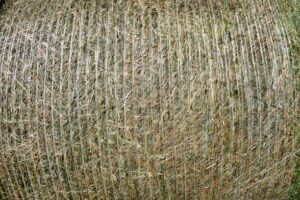Stump removal is a complicated task that requires knowledge of various techniques and skills. It is best to hire a professional for this job. However, some homeowners try to do this job themselves and often have disastrous results.
Stumps are unsightly and create tripping hazards in your yard. They can also rot and attract pests. They should be removed as soon as possible to prevent this from happening. For more information on how to hire tree stump removal Adelaide, check this out.
Stump grinding
 Stumps can be a tripping and mowing hazard and take up valuable garden space. They also attract pests and fungus and steal nutrients from surrounding healthy trees. Stumps can also interfere with sewer and water lines and are a fire risk. Stump grinding is an effective way to remove unwanted stumps and prevent them from regrowing.
Stumps can be a tripping and mowing hazard and take up valuable garden space. They also attract pests and fungus and steal nutrients from surrounding healthy trees. Stumps can also interfere with sewer and water lines and are a fire risk. Stump grinding is an effective way to remove unwanted stumps and prevent them from regrowing.
A professional tree service company can grind a stump below ground level and empty the hole for future landscaping. This will not only improve the appearance of your garden but will also make it easier to mow and maintain. The wood chippings can decay naturally or be used as mulch in flower beds.
Stump grinding is much safer than pulling the roots out with an excavator, and it can be done at a fraction of the cost. Stump grinding services are available throughout South Africa, including Johannesburg, Fourways, Sandton, Pretoria, Centurion, Durban, Cape Town and Bloemfontein.
Stump burning
This method of stump removal is cheaper than grinding and less destructive. However, it requires a lot of patience and close monitoring. Stump burning also requires safety gear and a fire extinguisher. Before you begin, clear the area of any flammable materials, such as wood or brush. Also, ensure the stump is far from any overhanging branches or structures. For more information on how to hire tree stump removal Adelaide, check this out.
Drill a :
- Drill into the stump using a long drill.
- Place in a fire pit and surround it with a tent of charcoal and scrap wood pieces. Add kerosene or fuel and light it. Once the If the Tump catches fire, add more charcoal and kindling to keep it lit.
3. If you are uncomfortable tackling this task alone, consider hiring a professional tree stump removal company in Adelaide. They have the proper equipment and experience to do the job safely and quickly. They can save you money in the long run and ensure the stumps are entirely removed from your yard.
Chemical stump removers
If you don’t want to spend money on a stump grinder, try using a chemical stump remover. These products contain a substance that hastens the stump’s decomposition, making it easier to dig out.
This method is unsuitable for large stumps and requires some work, especially if the stump is deep into the ground. However, it is less expensive than other methods and can be used for small tree stumps. Before applying the chemical, cut the stump low to the ground and remove the side bark to expose as much surface area as possible. You will also need a chainsaw, drill, and a plastic tarp.
If you’re not in a hurry, you can burn kerosene over the stump. This method takes longer but is more environmentally friendly. It is advisable to check the stump regularly for progress. For more information on how to hire tree stump removal Adelaide, check this out.
Stump removal by hand
Stumps are unsightly, trip hazards, and breeding grounds for pests. They also rot and can create a fire hazard if left unattended. A professional tree stump removal Adelaide company can help you remove these hazards safely and effectively.
When removing a stump, digging up the surrounding soil and exposing the most significant roots is essential. This is a difficult job and requires careful work to get to the root system. Once the roots are exposed, you can cut them with a spade or shovel.
 Traditionally, farmers used sisal twine to tie hay and straw bales. It was durable and held knots well, but it deteriorated quickly in the sun. In addition, it could entangle equipment and cause digestive problems in livestock. Currently, there are many different types of baling twine on the market, ranging from natural fibres to synthetic polypropylene. These varieties are often stronger and hold knots well while offering reduced environmental harm.
Traditionally, farmers used sisal twine to tie hay and straw bales. It was durable and held knots well, but it deteriorated quickly in the sun. In addition, it could entangle equipment and cause digestive problems in livestock. Currently, there are many different types of baling twine on the market, ranging from natural fibres to synthetic polypropylene. These varieties are often stronger and hold knots well while offering reduced environmental harm.